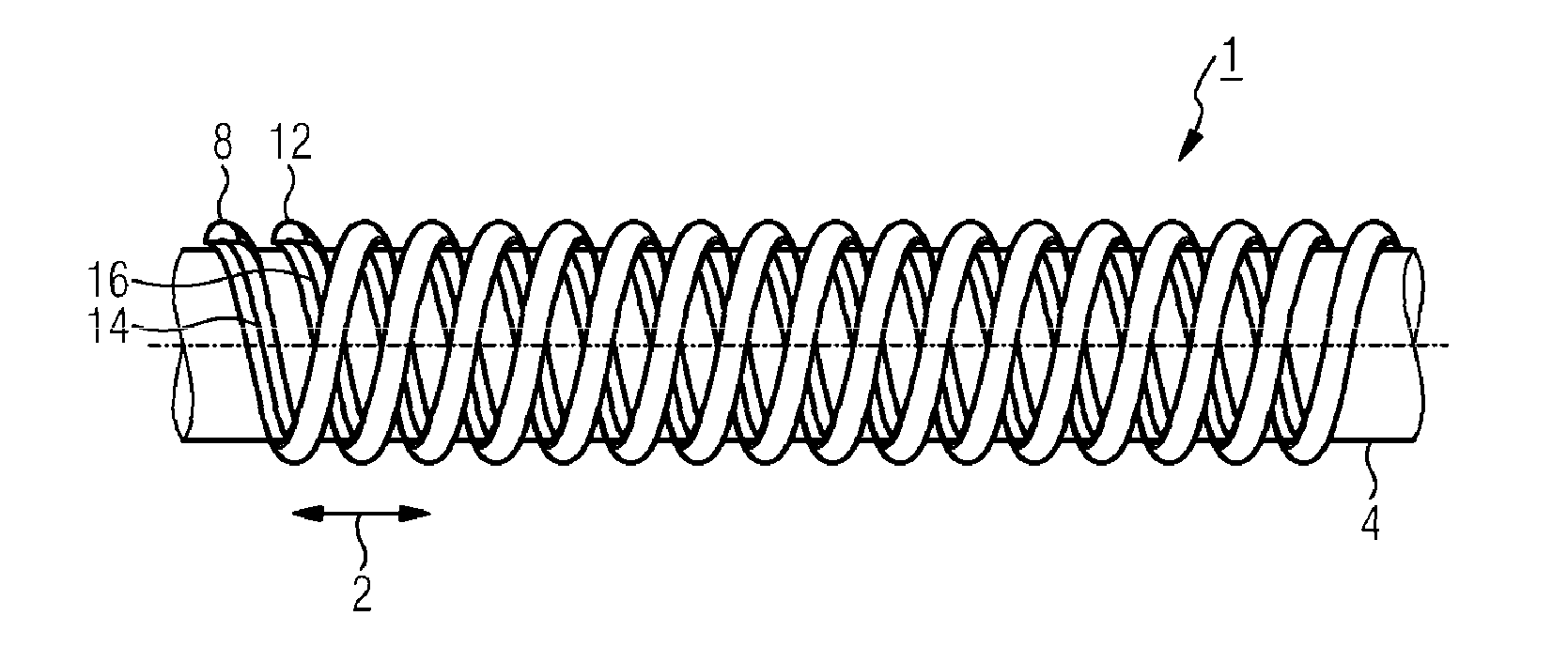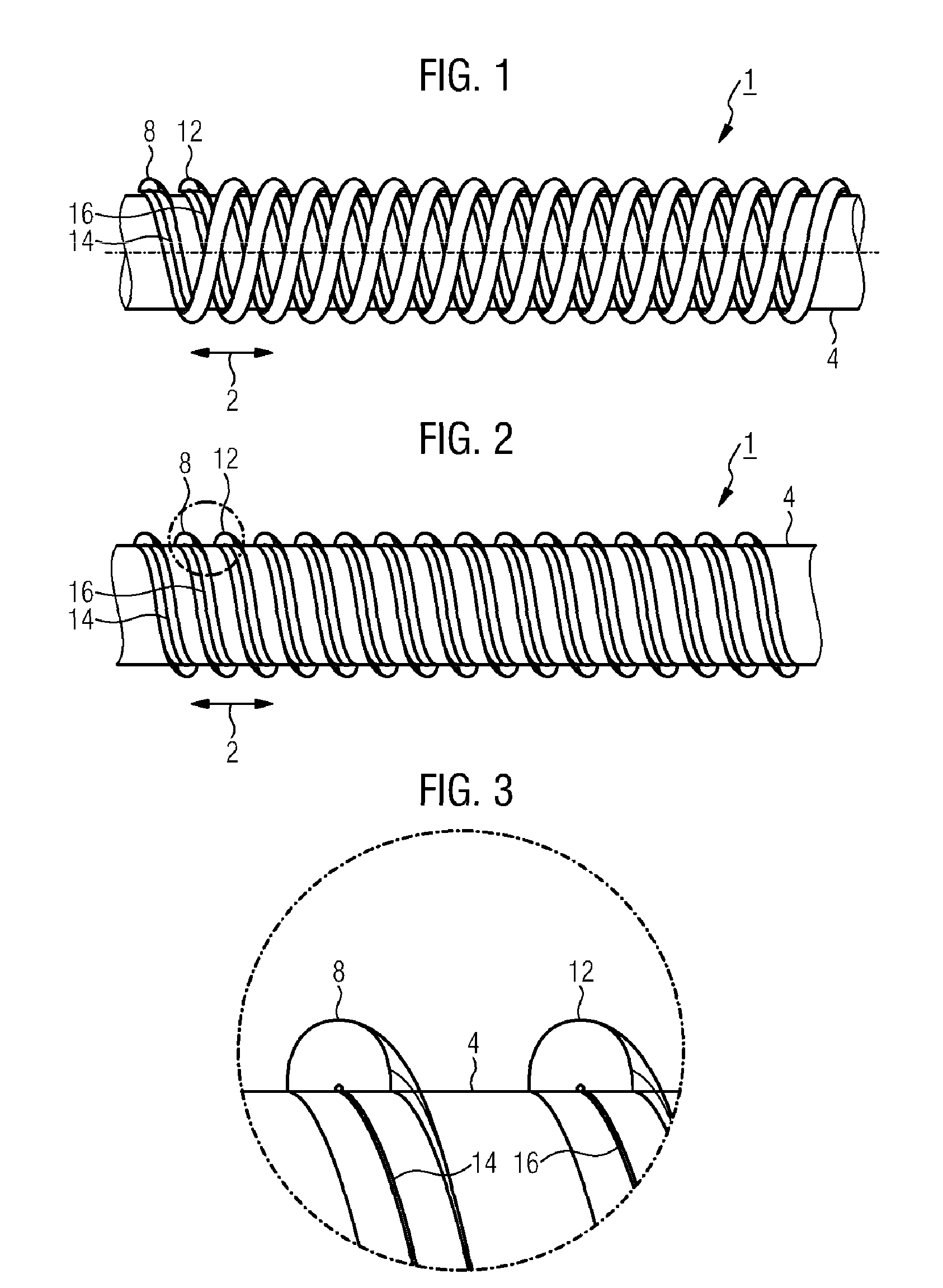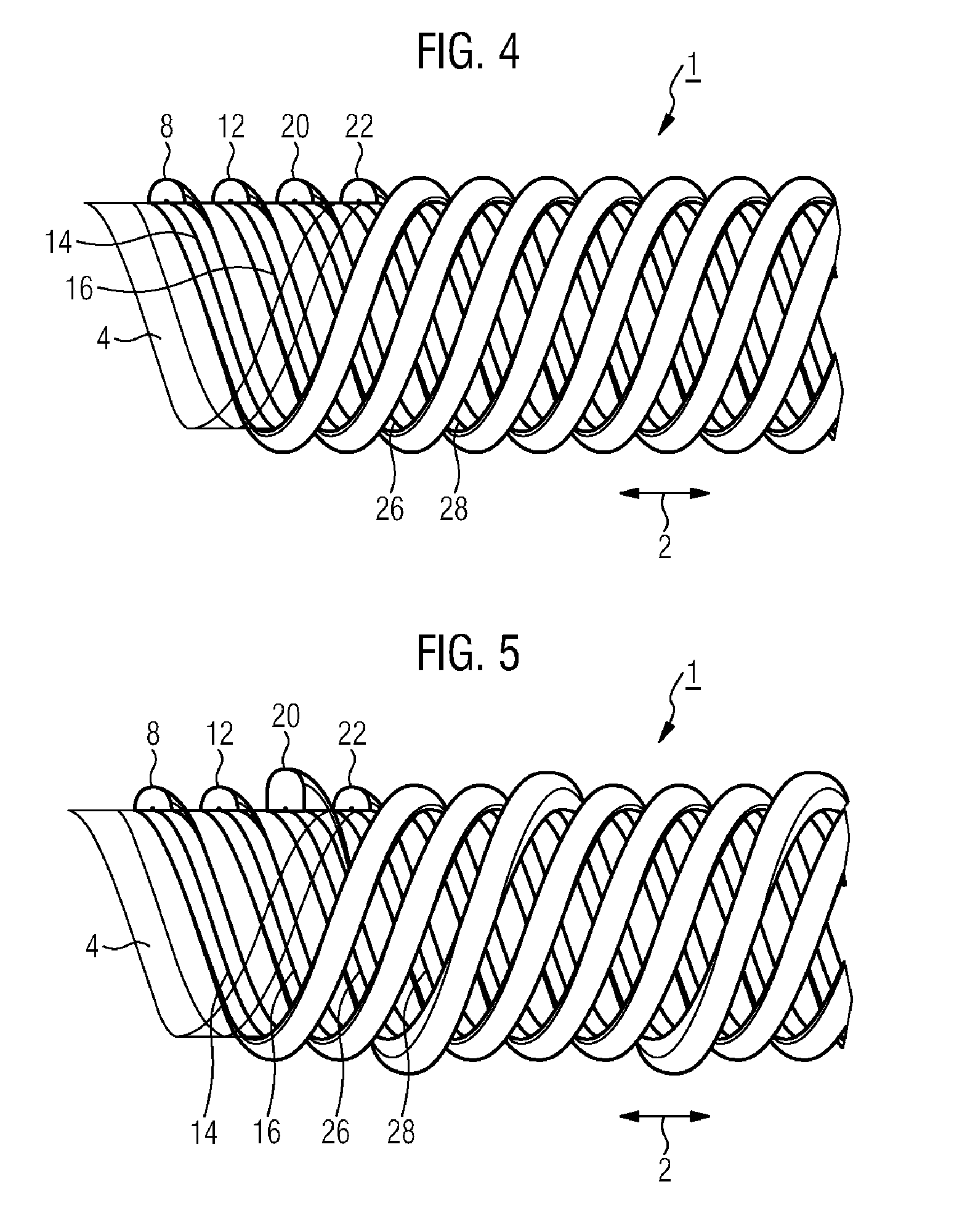Heatable hose
a hose and hose body technology, applied in the field of hoses, can solve the problems of short circuit, hygienic and technical problems, etc., and achieve the effects of high flexibility of hoses, short circuits, and reliable avoiding a contact between conductors
- Summary
- Abstract
- Description
- Claims
- Application Information
AI Technical Summary
Benefits of technology
Problems solved by technology
Method used
Image
Examples
Embodiment Construction
[0029]The heatable hose 1 shown in FIG. 1 is used in particular as a respiration hose. Viewed in longitudinal direction 2 of the hose, the hose wall 4 (transparent in this case) is surrounded by two helicoidal reinforcing ribs 8, 12. The two reinforcing ribs 8, 12 form together a two-threaded helical line or double helix. The reinforcing rib 8 surrounds or encloses a first single-conductor heating wire 14 with a suitably selected resistivity, and the reinforcing rib 12 encloses a second single-conductor heating wire 16, preferably having the same electric and mechanical characteristics as the first heating wire 14. The heating wires 14, 16 are connected with each other on one end of the hose 1 in an electrically conductive manner and are led out of the respective reinforcing rib 8, 12 on the other end of the hose 1. To heat the hose 1, the connection pieces of the heating wires 14, 16 led out of the reinforcing ribs 8, 12 are connected with the poles of a voltage source or heating-c...
PUM
 Login to View More
Login to View More Abstract
Description
Claims
Application Information
 Login to View More
Login to View More - R&D
- Intellectual Property
- Life Sciences
- Materials
- Tech Scout
- Unparalleled Data Quality
- Higher Quality Content
- 60% Fewer Hallucinations
Browse by: Latest US Patents, China's latest patents, Technical Efficacy Thesaurus, Application Domain, Technology Topic, Popular Technical Reports.
© 2025 PatSnap. All rights reserved.Legal|Privacy policy|Modern Slavery Act Transparency Statement|Sitemap|About US| Contact US: help@patsnap.com



